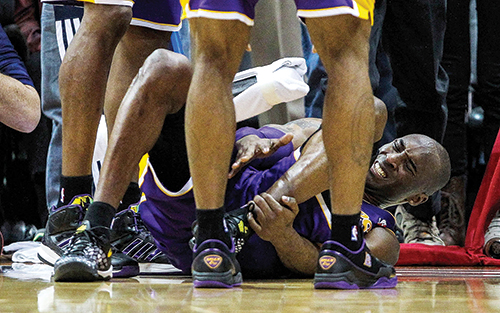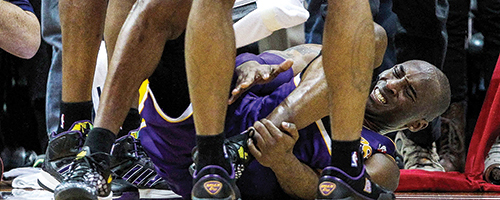As any professional athlete can attest, the world of high-stakes sports takes its toll on the body. At some point during the course of a career, athletes can expect to be confronted with a challenge greater than themselves. Better training methods and more effective medical procedures are in constant demand as the search for an advantage over the competition becomes increasingly fierce. Thankfully, the world of medical technology is bursting at the seams with new treatments and techniques, though some have come under scrutiny as the line between what is advantageous and what is unfair becomes more and more blurred.
Technology gives athletes an edge

As any professional athlete can attest, the world of high-stakes sports takes its toll on the body. At some point during the course of a career, athletes can expect to be confronted with a challenge greater than themselves. Better training methods and more effective medical procedures are in constant demand as the search for an advantage over the competition becomes increasingly fierce. Thankfully, the world of medical technology is bursting at the seams with new treatments and techniques, though some have come under scrutiny as the line between what is advantageous and what is unfair becomes more and more blurred.
Some treatments being employed today include platelet-rich plasma (also known colloquially as “blood spinning”) and hyperbaric oxygen tanks. PRP is relatively new but HBOT has been around for years. However, as they gain traction in the highly scrutinized universe of sports entertainment, questions about the legality of these techniques have begun to arise.
PRP requires a blood sample of around 55 cubic centimeters (a brimming shot glass’ worth), which is taken from a patient and then spun in a centrifuge for a few minutes. The force imposed by the centrifuge helps to separate the various blood components into several layers. One of these layers contains a high concentration of platelets, which is then injected into the afflicted area of the patient to promote healing. PRP is generally used to treat soft tissue injuries. Notable figures known to have used the treatment include Los Angeles Lakers all-star guard Kobe Bryant, former Pittsburgh Steelers wide receiver Hines Ward and future Hall of Fame tennis legend Rafael Nadal, all of whom have dealt with substantial knee injuries over the years.
PRP injections in the injured area stimulate a more rapid and intense healing response, thereby effectively shortening recovery time. However, the efficacy of PRP therapy seems to be inconsistent and, as of yet, there is a lack of evidence of any potential for anabolic effects (if used intramuscularly). This lack of evidence has thus far allowed the World Anti-Doping Agency to remove it from its list of banned substances/treatments, even though PRP injections seem to fall within their definition of prohibited methods of blood and blood-component manipulation.
The subject of hyperbaric oxygen tanks is perhaps even more murky. HBOTs facilitate the body’s physical recovery by artificially increasing atmospheric pressure (like being 10 feet underwater) within a chamber that effectively compresses the oxygen gases inside the body, allowing those gas bubbles to better permeate organs and muscles. With more available oxygen, muscles are able to get rid of waste product (lactic acid) and work more efficiently. Can you see where this is going? Needless to say, there are plenty of famous names associated with the technique, such as middleweight boxing champion Sergio Martinez and Novak Djokovic, currently the No. 1-ranked tennis player in the world.
There are numerous other avenues of potential controversy currently being developed, like Stanford University’s cooling glove, which provides rapid core temperature reduction; flotation tanks that give users an intense form of relaxation that can linger for a few days; and multi-radiance laser therapy, which helps to decrease pain and muscle stiffness. All of these techniques are thus far approved within the guidelines of the various governing bodies presiding over professional sports.
Regardless of how clearly quantifiable the results may be, there is no doubt that today’s technologies are providing some sort of physiological boost to the athletes who use them. Of course, the success of these world-class athletes is not due merely to advances in medical science, but rather a combination of superior training, productive diets and years—even decades—spent honing their talents. But sports are defined by their own set of particular laws and limitations, and individuals looking to push the boundaries of human ability will continue to seek out an edge that often brings them right up against those rules.
As our understanding of the human body becomes more refined, gray areas will continue to surface that will challenge the notion of fair competition and what it means to be an athlete. Because of this, a more-or-less constant reevaluation of the rules regarding professional advantage is underway. For a host of new medical breakthroughs being used by professional athletes today, it would seem that—at least for now—the jury is out.







